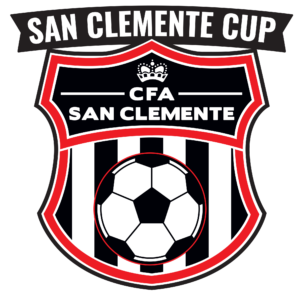Guide to Youth Soccer Games
The world of youth soccer in America is full of acronyms, leagues, and events that all seem to carry different levels of significance. Understanding the differences can help you better support your child and make informed decisions for your family.
Here’s a breakdown of the most common types of youth soccer events:
1. Scrimmages
What it is: An informal, often unannounced or late addition match added to the schedule.
Purpose: Practice. Coaches may stop play to give instruction, experiment with formations, or try out new players.
Pressure level: Very low. These are learning opportunities, not competitions.
What to expect: No referees —just game-like reps.
2. Friendlies
What it is: A scheduled, non-competitive match between two teams.
Purpose: Prepare for league or tournament play, test different tactics, or integrate new players.
Pressure level: Low to moderate. Teams generally want to win, but the outcome doesn’t affect standings.
What to expect: A real game atmosphere—referees, uniforms, and often full-length matches—but with more freedom for coaches to try things out.
3. League Games
What it is: Regular season games that count toward team standings in a specific league (e.g., MLS Next, ECNL, GA, EA, DPL, NPL, ECNL-RL, local league, etc.).
Purpose: Competition. These games determine promotion, relegation, or qualification for postseason play.
Pressure level: Moderate to high.
What to expect: A structured game day, referees, full intensity, and high player expectations.

4. Tournaments
What it is: A weekend event with multiple games, typically culminating in semifinals and a final.
Purpose: Compete for a trophy, get a lot of games in a short time, team bonding.
Pressure level: Varies. Some are highly competitive, others are developmental.
What to expect: 3–5 games in 2–3 days, potential for player fatigue, lots of soccer action.

5. State Cup/National Cup/Qualifying / Advancement Events
What it is: Elimination-style competition at the state level, often part of a pathway to regional or national championships.
Purpose: High-stakes competition. Winning teams may advance to higher rounds.
Pressure level: High. These are marquee events for many clubs.
What to expect: Knockout rounds, emotional intensity, high level of play. Not every player on the roster may see the field.

6. Showcases
What it is: Events designed to provide exposure for players to college coaches and scouts.
Purpose: Player visibility, not winning. Many don’t even keep score.
Pressure level: Individually high, but team-oriented pressure is low.
What to expect: College scouts on the sidelines, players focused on performance, often limited coaching from the sidelines.

7. Special Events (Camps, ID Clinics, Futsal Events, etc.)
What it is: Unique opportunities outside of regular play—skills clinics, position-specific training, or futsal tournaments.
Purpose: Skill development or talent identification.
Pressure level: Varies widely.
What to expect: Short bursts of focused work, often led by guest coaches or trainers. Good opportunities for individual growth.
Player Health
Foot Hygiene for Youth Soccer Players: Keeping Feet Healthy on and off the Field
For youth soccer players, foot health is just as important as ball skills and fitness. With all the running, cutting, and quick movements, their feet take a beating. Add in sweat, damp socks, and tight cleats, and you have a perfect environment for blisters, fungus, and discomfort. Poor foot hygiene can lead to infections, missed playing time, and long-term foot issues.
As a soccer parent, we all want to help our player, sometimes it is hard to find something to actually help with. Foot hygiene is one area that a parent can really make a difference. Help your player develop solid foot hygiene habits at a young age as it can make all the difference—especially during long tournament weekends. Here’s how you can keep their feet in top shape and ready for action.
1. Change Socks Regularly
Sweaty socks are a breeding ground for bacteria and fungus. Encourage your child to change into a fresh, dry pair after every game. If they’re playing multiple games in a day, they should have at least one or two extra pairs of socks on hand. In the big scheme of things twelve dollars for a second pair of socks is the best investment you can make for your player.
Game Day Tip 1: If your player has back-to-back games, have them change socks between matches. Let their feet air out for a few minutes before putting on the new pair.
Game Day Tip 2: If cleats are damp after training, remove the insoles and place them somewhere with good airflow to dry between games.
2. Use Foot Powder to Keep Feet Dry
Excessive moisture leads to blisters and fungal infections like athlete’s foot. A light dusting of foot powder before putting on socks can help absorb moisture and keep feet dry.
What to look for: Choose a foot powder with antifungal properties to reduce the risk of infections.
How to apply: Sprinkle the powder inside the socks or directly onto dry feet before putting on socks and cleats.
3. Always Wear Slides or Sandals Off the Field
Walking around barefoot in locker rooms, on damp grass, or even in socks can expose players to bacteria and fungi. Encourage your player to slip into sandals (slides or flip-flops) when they are not actively playing.
Tournament must-have: Pack a pair of slides so your player can take their cleats off between games to let their feet breathe.
Post-game routine: After games, have your child take off their cleats and socks immediately and switch into dry socks and slides.
4. Prioritize Foot Care on Multi-Game Weekends
Tournament weekends are rough on feet, but a little extra care can prevent issues:
Between games: Change socks, air out cleats, and wear slides when possible.
After the last game of the day: Encourage your player to soak their feet in cool water to reduce swelling and soreness. Applying an antifungal cream or powder before bed can also help keep feet fresh.
Stay hydrated: Dehydration contributes to foot cramping and soreness. Make sure your player is drinking plenty of water.
5. Address Blisters and Hot Spots Immediately
Even with the best foot hygiene, blisters can happen. As soon as your player feels a “hot spot” (an area of irritation), take action:
Apply a blister prevention pad or moleskin to the area.
If a blister forms, clean it with antiseptic and cover it with a bandage.
Avoid popping blisters unless they are painful, and always keep the area clean.
Final Thoughts
Good foot hygiene is a habit that will benefit your child throughout their soccer career. Changing socks, using foot powder, wearing slides, and taking extra care during tournaments can help prevent infections, blisters, and discomfort. Encourage your young athlete to make these habits second nature, and they’ll be able to focus on what matters—playing their best on the field!
